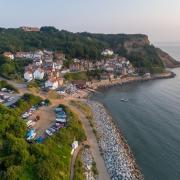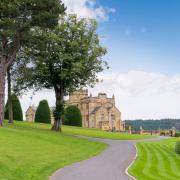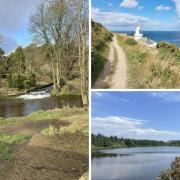Chris Titley learns to drive like a 'laid back cowboy"�„� to save fuel and the environment
Who needs Derren Brown? The bearded illusionist claims to have predicted the Lottery numbers and beaten the odds at a casino. All very clever. But has he driven a car four miles and ended up with more fuel than when he started? I think not.
I did, though, on a greener driving course. When I began, the dashboard readout said there was enough diesel in the tank to drive 295 miles. After a short journey tootling about the outskirts of Leeds, it insisted I now had enough gas to go 300 miles. Impossible, I hear Derren cry! It must be a trick. Perhaps I switched cars half way round, or had some spare diesel up my sleeve.
But there was no sleight of hand. As it turns out, eco-drivers go further.
Motoring is, let’s face it, a filthy habit; all those cars spewing out CO2, filling the air with nasty particulates, affecting the climate. It’s also a very hard habit to break, particularly in Yorkshire where places tend to keep their distance from each another, and even cities like Ripon have long since relinquished their railway stations. What’s a motorist with a green conscience to do? The answer is to learn to drive in a way which does the least damage to the environment.
So when the Energy Saving Trust staged a greener driving challenge, I had to give it a go. The set-up was simple. I joined a specialist instructor, Mike Waterton from Drivesense, in a diesel-powered VW Golf at the Woodlands Hotel in Leeds. From there I chauffeured him around the fairly typical suburb of Gildersome, first in the way I would normally drive, then, after learning some new techniques, in a smarter, greener fashion.
It’s time to be frank. Travelling is not my thing. Getting there is. When it comes to motoring I have the patience of a saint – if the saint in question is patron of clearing everybody else off the road so I can get to my destination right now, dammit.
That means I tend to floor the accelerator until I reach the speed limit (but never faster, m’lud) and then hit the brake when something like a red light has the effrontery to appear in my flight path. Think Stig the Top Gear stunt driver, only in a Ford Focus.
If I was expecting this singular style of driving to impress Mike, I was wrong. My whole approach was guzzling maximum gas and therefore was bad for the environment and my bank account.
‘You use most fuel when you’re moving off from a stationary position, changing gear and accelerating,’ he explained. So to cut consumption ‘try to keep the vehicle moving more. When you’re coming up to a hazard like a red light, rather than just race up to it and come to a halt, ease off a little bit early. In some of the modern vehicles, once you come off the accelerator you’re not using any fuel.’
Fewer gear changes also increase those miles per gallon. When I approached a red light I went down through all the gears. An eco driver often stays in the higher gear as he decelerates but ‘as the engine changes tone you have to de-clutch or you’ll stall’. Speeding up, block gear changes – from second to fourth for example – are a good option. ‘The basic rule is high gear, low revs. But don’t have the car struggling,’ said Mike. ‘And safety is paramount. Don’t jeopardise safety for miles per gallon.’
With that we set off again around Gildersome’s A-roads and backstreets, tackling the standard perils that assail the modern driver – speed bumps, chicanes, streets narrowed by parked cars and a pothole or two. Whenever we approached the lights or a tight bend, I eased off the gas. Each time the Golf’s instant consumption dial confirmed we were using ‘0.0 mpg’.
On right hand bends Mike said to drive to the left to get a better view. Entering a road lined with parked cars but few oncoming vehicles the message was to ‘pinch more space’ and move further out to the middle: ‘It’s all about looking at the road ahead, early anticipation and planning.’
When the street took a sharp turn to the right we glanced in the house windows to see if their reflections gave any clue as to the traffic that lurked just out of sight. And it dawned on me that green driving was synonymous with safe driving. Instead of the stop-start, accelerate-brake approach which had characterised my motoring, I was learning to keep on rolling like a laid back cowboy, slowing earlier and then smoothly picking up speed as the lights or other hazards changed.
Back in the hotel car park, Mike checked the figures. On my first journey, I’d done 45.5 miles per gallon, on my second 53.1mpg, an increase of 7.6. And that was over just four miles. ‘We’ve had people making 30 per cent fuel savings in a 50 minute smarter driving lesson. It’s quite extraordinary,’ said Tim Anderson, network transport manager for the Energy Saving Trust. ‘Over a year that’s going to equate to about a �250 saving on fuel.’
It also means a lot less carbon dioxide going into the atmosphere. On average, smarter driving cuts emissions by 15 per cent, or about half a tonne of CO2 per year per car. As road travel causes more than a fifth of the UK’s output of this greenhouse gas that could go a long way down the road to helping the planet.
Mike’s driving tips
Less space, less speed
Never join the queue, always start one of your own
Slow to flow – if you’re moving, you’re making progress
Tyres and Tarmac – what you should see in front of you when stuck in a queue. If you can’t see them, you’re too close to the car in front
Vision before decision – see the road ahead’s clear before taking action
Smarter driving tips
Change up a gear early
Cut your speed – cruising at 65mph instead of 70 can reduce fuel usage by as much as 10%
Read the road – avoid sharp braking or sudden acceleration
Don’t idle the engine when you’re in a jam – turn it off
Check your tyre pressures – under inflated tyres increase fuel consumption
Source: Energy Saving Trust


























